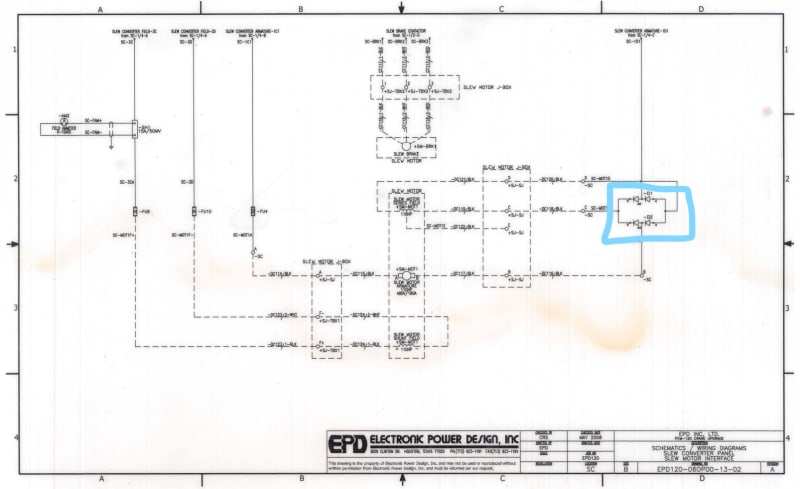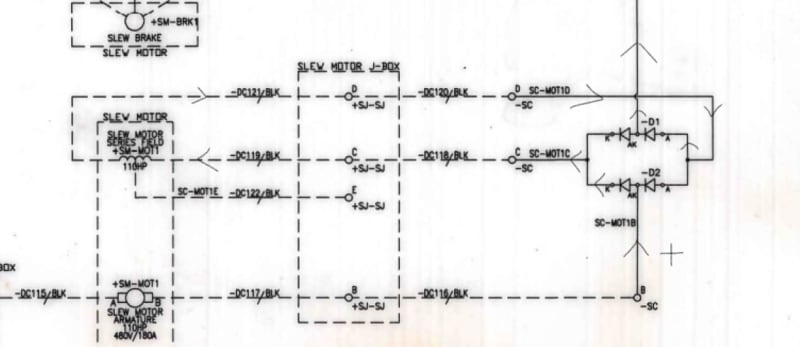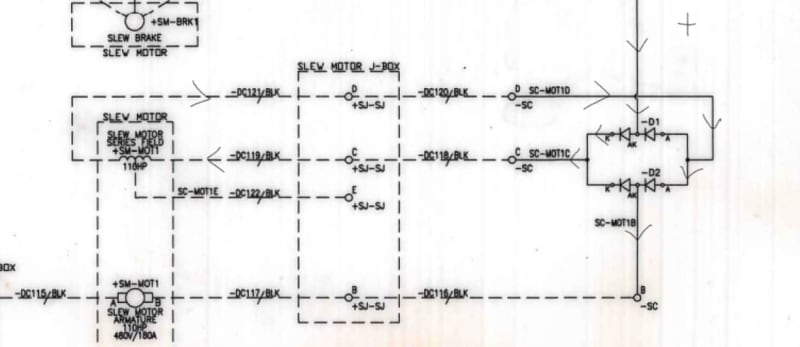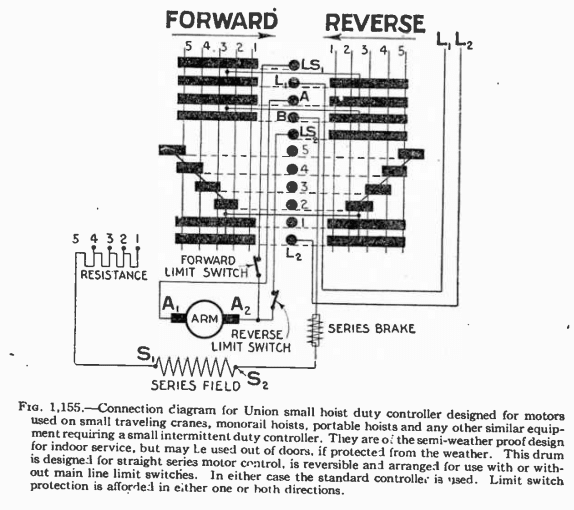edison123
Electrical
- Oct 23, 2002
- 4,507
Drive gurus
Please see below a DC compound motor control schematic.
What is the function of set of 4 diodes on the right (marked in blue) that feed the series field?
Are they for ensuring the series field current direction is unidirectional when armature voltage is reversed for rotation direction reversal (hoist up/down)?
How do they work? Thanks for your inputs.

Muthu
Please see below a DC compound motor control schematic.
What is the function of set of 4 diodes on the right (marked in blue) that feed the series field?
Are they for ensuring the series field current direction is unidirectional when armature voltage is reversed for rotation direction reversal (hoist up/down)?
How do they work? Thanks for your inputs.

Muthu




